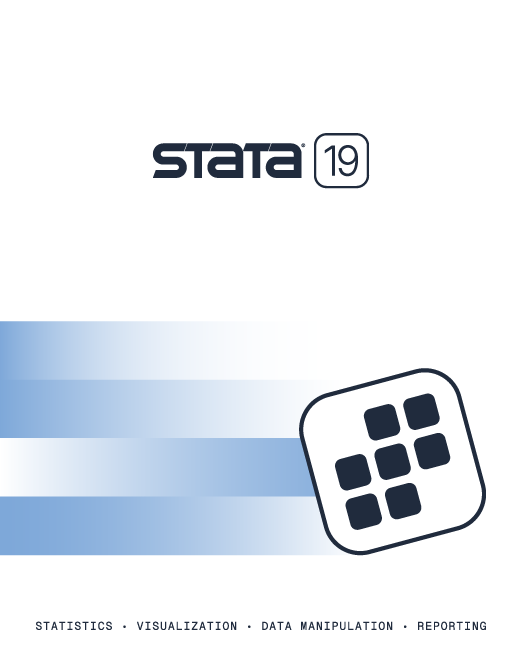
| 9:30–10:00 | Step-by-step or all at once: A comparison of multilevel analysis using one-step and two-step approaches
Abstract:
This presentation discusses advantages of the two-step approach for analyzing hierarchical data. To this end, the parameters of a multilevel model are estimated using the conventional one-step (mixed-effects) approach. The same analysis is then repeated using the two-step approach, with examples that illustrate cases where reliance solely on the one-step method would have led to severe misinterpretations. The presentation also demonstrates the community-contributed program twostep by Giesecke and Kohler (2024).
Reference: Giesecke, J., and U. Kohler. 2024. Two-step analysis of hierarchical data. The Stata Journal, 24: 213–249. https://doi.org/10.1177/1536867X241257801
Additional information:
Ulrich Kohler
University of Potsdam
|
| 10:00–10:30 | Testing overidentification and orthogonality conditions in Stata
Abstract:
I consider tests of orthogonality conditions in linear and panel-data models through the lens of how to avoid the pitfalls of “null hypothesis misspecification testing” (NHMT, Nichols and Schaffer 2022). Tests of orthogonality conditions using the standard Hansen–Sargan J test of overidentification and its relatives are usually dichotomous tests of misspecification: “reject” or “fail to reject” the orthogonality conditions. But typically, the researcher should want to know the practical implications of a rejection. Does it make an important difference to the estimates of the parameters of interest? How precisely is this difference estimated? The artificial regression version of the Hausman test for panel error-components models (“fixed versus random effects”) is a good example of how this can be done because the test is expressed in the metric of the parameters of interest. For the standard linear model fit using IV or GMM, I show how this can be easily implemented in Stata using system estimation of multiple equations with different sets of orthogonality conditions in different specifications that allow the researcher to not only test the orthogonality conditions but also express and assess potential failures of these conditions in the metric of the parameters.
Reference: Nichols, A., M.E. Schaffer (2022). Practical Steps to Improve Specification Testing. P. 75–88 in: N. Ngoc Thach, D.T. Ha, N.D. Trung, V. Kreinovich (eds.). Prediction and Causality in Econometrics and Related Topics. Cham: Springer. https://doi.org/10.1007/978-3-030-77094-5_8
Additional information:
Mark E. Schaffer
Heriot-Watt University
|
| 11:00–11:30 | Causal detailed decomposition
Abstract:
Understanding differences in wage distributions across groups—such as between men and women, or black and white individuals—or tracking changes over time are fundamental economic questions. The Oaxaca–Blinder–Kitagawa decomposition allows us to break down the observed average difference into a part explained by differences in characteristics and an unexplained component, often interpreted as discrimination. This decomposition carries a causal interpretation under the unconfoundedness assumption. Similar decompositions have been developed to analyze differences in distributions. In this presentation, I propose new causal detailed decompositions that break down the explained component into contributions from individual characteristics. These detailed decompositions are novel for both average and distributional decompositions. I demonstrate that existing detailed decomposition methods have no causal interpretation.
Additional information:
Blaise Melly
University of Bern
|
| 11:30–12:00 | Shapley value calculations: Implementation and illustrations
Abstract:
This talk will illustrate the use of the Shapley–Owen value in regression and various decomposition analyses. I will first introduce the concept of the Shapley value and the related Owen measure for nested structures. I will then describe its use in regression and different types of decomposition analyses and introduce the shapowen prefix command to facilitate implementation of generic calculations of the Shapley–Owen value in Stata.
Additional information:
Philippe Van Kerm
University of Luxembourg
|
| 1:15–2:15 | Modeling with observed and latent groups
Abstract:
Stata's estimation commands have evolved in how they accommodate groups. Since the early days, fitting models with group-specific parameters is simply a matter of using the if clause to condition on group membership. Hierarchical and partition-clustering methods, available in the cluster suite of commands, were introduced in Stata 7. Inference between group-specific parameters was made possible with the introduction of suest in Stata 8. Factor-variables notation was introduced in Stata 11. Stata 12 introduced sem and group analysis for structural equation models (SEMs). Stata 15 introduced two kinds of group analysis for generalized SEMs. For observed groups, gsem has group() option. For latent groups, gsem has the lclass() option and the ability to perform latent class analysis (LCA). The finite mixture models prefix fmm was also introduced in Stata 15. Stata 19 now has the ability to test for the number of latent groups (classes).
Additional information:
Jeff Pitblado
StataCorp
|
| 2:30–3:00 | Gender norms and female well-being: An empirical examination
Abstract:
Based on cultural norms, females during menstruation time are discriminated against, considered impure, and restricted from participating in many rituals. We analyze the relationship between menstruation-related sociocultural restrictions, period poverty, and well-being using a unique nationally representative microdata of reproductive-age females. Menstrual restrictions and period poverty show strong adverse effects on health and well-being. One standard deviation (SD) increase in menstruation restriction increases the probability of poor self-reported health and anxiety by 3.4 and 2.2 percentage points (p.p.). Findings are robust to different specifications and the inclusion of a rich set of controls. The findings indicate that menstrual restrictions may have a long-term effect on the health and well-being of females beyond the menstruation period.
Additional information: Not available
Mukesh Kumar
Indian Institute of Technology and Vikas Poonia (Chaudhary Ranbir Singh University)
|
| 3:00–3:30 | Sources of long-term sustainable growth and productivity developments: A comparative analysis, 1950–2023
Abstract:
This presentation constructs an original growth decomposition database covering 130 countries from 1950 to 2023, contributing to the growth accounting literature in three key aspects. First, I refine the traditional concept of TFP by singling out the contributions of capital composition, educational attainment, education quality, innovation output, and technology adoption. Second, I provide a global perspective and a detailed analysis of growth decomposition in emerging and low-income economies, areas largely overlooked in previous studies, with a focus on the comparative performance of income trap escapers and nonescapers. Third, I investigate the underlying drivers of key growth contributors and discuss policy implications for achieving sustainable growth. My findings suggest that income trap escapers depend more heavily on productivity gains than nonescapers. Specifically, technology factors contribute 9.1% more to growth for escapers of low-income traps compared to nonescapers, while capital efficiency contributes 7.4% more to growth for escapers of middle-income traps. Additionally, we identify market openness, monetary and fiscal stability, and efficient regulatory frameworks as critical strategies for achieving and sustaining long-term economic growth.
Additional information:
Menggelisha
The World Bank
|
| 4:00–4:30 | crosswalk: A new command for fast and flexible bulk recoding
Abstract:
In this talk, I will present the new crosswalk command, a data management utility for fast table-based recoding. The command comes with predefined crosswalk tables for common recoding tasks related to occupational classifications, for example, to translate ISCO codes (International Standard Classification of Occupations) into ISEI scores (International Socio-economic Index of Occupational Status), OEP scores (Occupational Earning Potential), or ESeC classes (European Socio-economic Classification). However, it is also easy to define, manipulate, and apply custom recoding tables. In the talk, I will briefly explain how crosswalk is implemented, present its syntax, and then illustrate its use with some applied examples.
Additional information:
Ben Jann
University of Bern
|
| 4:30–5:00 | Building a grammar of graphics for Stata
Abstract:
This presentation revisits data visualization in Stata by introducing a new set of modular building blocks designed to enhance flexibility and customizability. While recent years have seen substantial progress in the development of visualization packages, most are maintained by a small set of contributors. By providing the community with a set of generic, user-friendly programs, a modular approach enables the users to create fully customizable visualizations with relatively little coding effort. The presentation will demonstrate some of these modular tools.
Additional information:
Asjad Naqvi
Austrian Institute for Economic Research (WIFO)
|
| 5:15–6:00 | Open panel discussion with Stata developers
Contribute to the Stata community by sharing your feedback with StataCorp's developers. From feature improvements to bug fixes and new ways to analyze data, we want to hear how Stata can be made better for our users.
|

The logistics organizer for the 2025 Swiss Stata Conference is Ritme, scientific solutions, the official distributor of Stata in Belgium, Luxembourg, and Switzerland.
View the proceedings of previous Stata Conferences and international meetings.